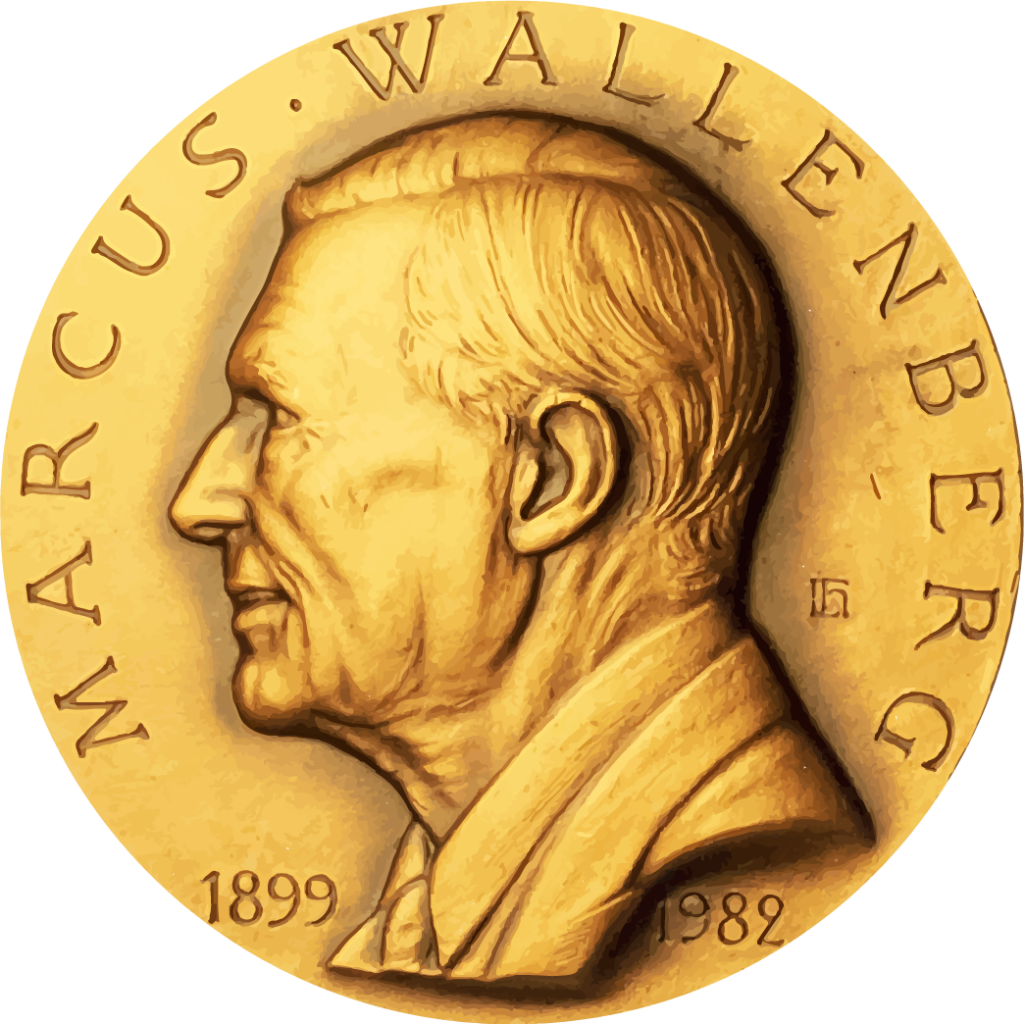Alexander Katsevich and Federico Giudiceandrea succeeded in constructing a logscanner, that no one thought would be possible. Photo: Ruth Leitner.
“We made a great team”
Alexander Katsevich appreciates collaborating with Federico Giudiceandrea. Their development of a CT scanner for sawmills is awarded the 2016 Marcus Wallenberg Prize.
– I am happy when my mathematical ideas are implemented in practice, says Alexander Katsevich.
Alexander Katsevich, professor of mathematics at The University of Central Florida, USA, was busy thinking about a problem when he answered the telephone. The line was very bad. It took some time to understand that professor Kaj Rosén at The Marcus Wallenberg Foundation was telling him that he will share the 2016 Marcus Wallenberg Prize with Federico Giudiceandrea.
– I thought it was some kind of a joke and did not believe the news at first. I realized it was serious when I heard that Federico was there and I could speak to him. But then my mind went into shock. I could not think straight and do not remember how the call went on, Alexander Katsevich recalls.
Since then he has received congratulations from friends, family and colleagues but still finds it hard to believe that he actually has won the prize.
– I’m very honoured, but it is just surreal, he says.
Developed the algorithm
Research on using computed tomography, CT, started long ago to detect undesired board features in wood. The result was promising, but industrial realization was hampered by the slow speed of the process.
CT images are not captured directly but reconstructed by a sophisticated algorithm. Alexander Katsevich made a revolutionary breakthrough in CT imaging by developing the first fast and exact 3D image reconstruction algorithm. Today it is known as Katsevich’s algorithm.
Federico Giudiceandrea, CEO at Microtec, Brixen, Italy, wanted to implement the algorithm with the applications to CT scanning.
– The scanner that he had in mind was supposed to have high throughput, and this placed very stringent restrictions on the algorithm. I developed an algorithm, which satisfied all the requirements, Alexander Katsevich tells.
He appreciated working with Federico Giudiceandrea.
– He has deep insight into the practical aspects of the scanner. He informed me about the requirements that my algorithm was supposed to satisfy, and I told him about some theoretical constraints that the scanner should satisfy.
– Our areas of expertise were complementary and we made a great team, says Alexander Katsevich.
Being an applied mathematician he enjoys collaborating with the industry. As a chief technology officer, CTO, at iTomography Corporation, Houston, Texas, USA, he gets many opportunities to realize his mathematical ideas. The company delivers solutions to challenges in medical and industrial applications of CT and other X-ray based imaging.
– Our services support any stage of the product lifecycle – from concept to deployment and beyond to the next generation of CT scanners. Some of our customers have strong engineering capabilities but need help with developing special algorithms and software that takes into account the specifics of their scanners to produce outstanding images. Other customers have strong skills in both hardware and software, but still need extra expertise to solve particularly challenging CT imaging problems. The successful project with Microtec is a great example of what is possible to achieve for a scanner manufacturer through collaboration, Alexander Katsevich says.
High speed – and image quality
Katsevich’s algorithm is most useful in applications where both high throughput scanning and high image quality are required. It can be used for non-destructive testing, security screening and analysis of objects of various sizes manufactured from different materials.
The algorithm is now being utilized for rock core imaging in the petroleum industry, where a single scan with conventional techniques takes hours.
– This particular application is used to image the rock core structure at pore-scale resolution and, helps to accurately determine how much hydrocarbons is in a reservoir, Alexander Katsevich tells.
Recently iTomography completed a joint project with Carl Zeiss X-ray Microscopy and presented results at the 2015 Annual Meeting of the Society of Petroleum Engineers in Houston, USA.
– In this project my algorithm combined with the helical scanning performed by a new micro-CT scanner was shown to allow for a multi-fold increase in throughput, compared to earlier very slow modes of scanning, while maintaining the same or better image quality, says Alexander Katsevich.
Alexander Katsevich, co-recipient of the 2016 Marcus Wallenberg Prize.




